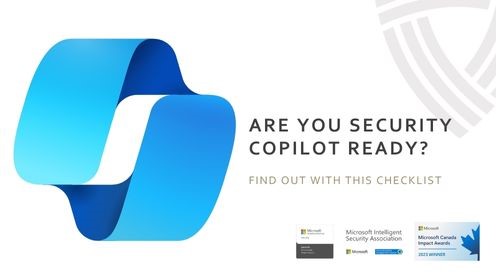
What is Penetration Testing?
Penetration testing is known as an assimilated hack to identify vulnerabilities in your environment that hackers can exploit to extract your critical data. It is also known as ethical hacking. Since today’s hackers are sophisticated as demonstrated by today’s news headlines of cyber-attacks both targeting government organizations and corporations, you need a team of highly qualified cybersecurity experts that can think like today’s advanced cyber attackers.
Why and When is a Penetration Test Necessary?
Penetrating testing is mandatory not only for compliance, also to gain knowledge of the most effective ways to defend your organization from the vulnerabilities identified from the penetration test. In addition to knowing if breached from these exposed vulnerabilities, you will know the amount of damage it can cause your organization. Knowledge is power. When you know these critical factors, you can successfully protect your critical data and monitor your critical data. Our client’s benefit from our effective remediation after identifying their vulnerabilities.
A penetration test shows if your tools and configurations are effective to protect your organization from today’s sophisticated cyber attackers’. It helps prevent attackers taking over networks, installing malware, disrupting your business and potentially costing you millions of dollars as a result. The average cost of a single data breach is $3.5 million dollars according to The Ponemon Institute, 2017.
Boost the Performance of Penetration Testing
Outsourcing your penetration test increases the success of the penetration test because you get an outside perspective with a fresh set of eyes to identify security threats. You want to outsource to a cybersecurity company with experience because they have advanced knowledge based on their experience. You also want to ensure they are not limited to automated testing. Human intelligence currently exceeds artificial intelligence. AI software programs not involving humans to detect and monitoring cyber threats are not as advanced as humans are. AI cannot mimic the advanced capabilities humans have to effectively detect and prevent organizational breaches in all forms.
The Phases of Penetration Testing
Penetration Testing Methodologies
Penetration testing is a type of security testing that is used to assess the ability of a system to defend against external threats. There are many different penetration testing methodologies, but they all have one common goal: to find and exploit weaknesses in a system. The most common penetration testing methodology is known as black box testing. This approach focuses on simulating an attack from an outside perspective, without any prior knowledge of the system. White box testing, on the other hand, is conducted from an insider perspective. This approach relies on knowledge of the system’s inner workings in order to identify potential weaknesses. Gray box testing is a hybrid of these two approaches, and it is often used when penetration testers are working with limited information. No matter which methodology is used, penetration testing can provide valuable insights into a system’s vulnerabilities.
Mobile Application Penetration Testing Methodology
Phase I Discovery
- Open Source Intelligence – Open Source Intelligence, or OSINT, is the practice of collecting information from publicly available sources. This can include social media, news articles, search engines, and more. OSINT is often used for penetration testing, or the process of trying to gain access to a system or network. By collecting publicly available information, penetration testers can find vulnerabilities that they can then exploit. OSINT can also be used for intelligence gathering, such as tracking the movements of a particular individual or group. Ultimately, OSINT is a powerful tool that can be used for a variety of purposes.
- Understand the Platform – To understand the complexity of penetration testing, it is important to consider all of the different factors that come into play. With penetration testing, security analysts must have a deep knowledge of the target systems and applications that they are trying to hack. They must also have extensive experience with different types of attack techniques, such as social engineering, SQL injection, and brute force attacks. Additionally, penetration testers need to be skilled at developing custom exploits that can help them to get past any security measures and access critical data and systems. Ultimately, penetration testing requires a combination of technical expertise and creative problem-solving skills in order to be successful.
- Client-Side vs. Server Side Scenarios – In the world of cybersecurity, there are two main types of testing: client-side and server-side. Client-side penetration testing, also known as whitebox penetration testing, involves scanning an application or system from the user’s perspective. This means that testers take on the role of a typical end user and attempt to break through security measures by entering false data, bypassing authentication measures, or exploiting vulnerabilities. Client-side penetration testing is useful for uncovering security flaws that can directly impact users of a particular application or system.
In contrast, server-side penetration testing, or blackbox penetration testing, focuses on specific elements within an application’s code rather than directly observing how it is used. During these tests, testers use automated scripts to scan for vulnerabilities and then attempt to exploit them in real time. Server-side penetration testing is typically used to identify systemic weaknesses in an organization’s IT infrastructure and often suggests areas for improvement based on these findings. Ultimately, whether you need a client-side or server-side penetration test depends on your specific needs and intended outcomes. But both are powerful tools for uncovering critical vulnerabilities that can impact your business’s bottom line.
Phase II Assessment/ Analysis
- Local File Analysis – Local File Analysis is the process of looking for sensitive information that has been unintentionally left in publicly accessible files. This can include anything from passwords and SQL database dumps to credit card numbers and confidential documents. While it may seem like a daunting task, Local File Analysis can be a valuable tool for penetration testers. By searching for sensitive data, penetration testers can gain a better understanding of an organization’s security posture and identify potential vulnerabilities. Additionally, Local File Analysis can also help penetration testers to understand an organization’s business processes and identify potential areas of improvement. With its ability to provide valuable insights into both an organization’s security posture and business processes, Local File Analysis is an essential tool for any penetration tester.
- Archive Analysis – Archive analysis is the process of determining the contents of a file or group of files without opening them. This can be useful in a number of situations, such as penetration testing, where you may want to know what kind of data is stored in a file without actually opening it and triggering any alerts. Archive analysis can also be used to determine the provenance of a file, or to check for signs of tampering. There are a number of tools available for archive analysis, and the exact approach will vary depending on the file format. However, in general, you will need to extract the headers and metadata from the file in order to get an overview of its contents. This can be done using a hex editor or a specialized tool designed for archive analysis. Once you have extracted the headers, you can then use a reverse engineering approach to try to understand what they contain. This can be a complex process, but it is often possible to get a good understanding of the contents of a file without actually opening it.
- Static/Dynamic Analysis – Penetration testing can be divided into two main types: static and dynamic analysis. Static analysis is a type of penetration testing that relies on code review and other forms of static analysis to find vulnerabilities. Dynamic analysis is a type of penetration testing that relies on runtime monitoring and assessment to find vulnerabilities. Dynamic analysis is generally considered more effective than static analysis, but both approaches have their advantages and disadvantages. Penetration testing is an essential part of any security program, and it should be tailored to the specific needs of the organization.
- Inter-Process – Inter-process penetration testing is a crucial part of effective cybersecurity. By identifying weaknesses and vulnerabilities in a system’s internal processes, penetration testers are able to proactively protect critical data and prevent security breaches before they happen. Such testing typically involves identifying areas where there might be potential entry points for attackers, such as poorly-protected user accounts or lax password protocols. Once these vulnerabilities have been identified, penetration testers can take steps to shore up the system’s defenses and ensure that sensitive information remains safe and secure. Whether it’s evaluating firewall settings, taking on simulated hacker attacks, or performing penetration simulations against fake company data, inter-process penetration testing plays an essential role in protecting organizations against malicious attacks.
- Endpoint Analysis – Endpoint analysis is a critical part of the penetration testing process, as it allows security professionals to gain a deeper understanding of potential vulnerabilities in their systems. This involves carefully examining each aspect of an endpoint, including its hardware components, software configuration, network settings, and more. By doing this, security experts can better understand where flaws may lie and take measures to either fix or work around those flaws in order to ensure the highest level of protection for their organization. Thus, endpoint analysis remains an essential tool for companies looking to strengthen their cybersecurity posture through penetration testing.
Phase IV Exploitation
- Conduct Proof of Concept – Proof of concept (PoC) exploits are an essential part of penetration testing. These attacks are designed to demonstrate the potential vulnerabilities that exist within a computer or network system without causing any real damage. PoC exploits typically involve using custom software tools to identify security holes and exploit them in order to gain access to restricted areas or otherwise compromise the overall security of the system. This makes them a critical tool for penetration testers and cyber security experts, as they allow us to mitigate threats and prevent potential attacks before they actually occur. Overall, PoC exploits play an indispensable role when it comes to protecting our data and ensuring that our systems remain secure.
- Exploitation of identified weaknesses – This involves identifying and verifying potential weaknesses in a system or network and then attempting to exploit these vulnerabilities by entering, or “penetrating,” the system or network. By looking for areas of vulnerability, the penetration test can highlight any weaknesses that may need to be addressed. Furthermore, by confirming the existence of particular vulnerabilities and documenting their specific characteristics, a penetration test can help to improve an organization’s security posture by allowing issues to be prioritized and addressed systematically. Ultimately, taking these measures can help to ensure that sensitive data remains safe and secure from unauthorized access.
- Exploit vulnerabilities to gain sensitive information or perform malicious activities
Phase V Post-Exploitation
- Identify and exploit privilege escalation vulnerabilities (root)
- Persist with device/application to show future access possibilities
Phase VI Reporting
- Provide detailed reporting on findings along with risk rating, business impact and prioritized remediation recommendations – Over the past several years, our team of security experts has conducted numerous penetration tests on a wide range of businesses and organizations. We have amassed a wealth of data detailing the specific vulnerabilities that we identified during these tests, as well as the potential impact of each one on business operations.
Based on this information, we have developed a comprehensive risk rating system that assigns a risk level to each vulnerability according to its severity and likelihood of being exploited. Business impact is also taken into account when assigning a risk rating, with factors such as financial losses and brand reputation playing an important role in our decision-making process.
In addition to providing detailed reporting on our findings, we also offer prioritized remediation recommendations so that you can address your most urgent vulnerabilities first. Whether you need guidance on improving your overall security posture or more detailed advice on implementing specific mitigation strategies, we are here to help you protect your business from emerging cyber threats. So if you’re looking for comprehensive penetration testing services, look no further than our team at Difenda!
Web Application Penetration Testing Methodology – OWASP Top 10
Penetration tests are an important part of any organization’s cybersecurity strategy, and the OWASP Top 10 is a popular framework for conducting these tests. The OWASP Top 10 is a classification of the most common attacks on web applications, and it includes 10 categories: injection, broken authentication and session management, cross-site scripting, insecure direct object references, security misconfiguration, sensitive data discovery, cross-site request forgery, using components with known vulnerabilities, insufficient supply chain security, and Insufficient logging and monitoring. Penetration testers use a variety of tools and techniques to simulate each of these attacks, and they then provide recommendations on how to fix the vulnerabilities they find. By performing regular penetration tests using the OWASP Top 10 framework, organizations can help to ensure that their web applications are secure against the most common types of attacks.
- Map Application Content – Gather detailed information about your application platform.
- Deconstruct Application – Identify potential attack vectors located within the application and its business logic.
- Threat Modeling – Identify likely attack scenarios within your application platform and potential risks associated with them. Threat modeling is an essential part of cyber security. By identifying likely attack scenarios and the risks associated with them, businesses can take steps to protect themselves against potential cyber threats. Cybersecurity experts typically use a three-step process to evaluate threat models: first, they identify the assets that need to be protected; second, they identify the potential threat vectors that could be used to attack those assets; and third, they assess the likelihood and impact of each threat vector. By taking these steps, businesses can develop a comprehensive cyber security plan that will help to protect their data and systems from potential attacks.
- Application Vulnerability Analysis – Identify weaknesses in specific applications deployed within your environment, testing client-side controls, authentication methods, session management, access controls, input based controls, security issues related to functionality, logic flaws, and information leakage.
- Proof of Concept – Conduct proof of concept of identified weaknesses and develop impact results such as capability of an attacker to commit fraud or pose financial loss.
- Reporting – Provide detailed reporting of all identified Vulnerabilities, successful exploitations, and prioritized remediation strategies
Penetration Test Methodology for Wireless
- Reconnaissance – Gather detailed information about client’s 802.11 Infrastructure and SSIDs.
- Attacking the access points – Identify potential attack vectors against 802.11 access points located within client’s environment.
- Pivoting – Attempt to gain access to resources not normally provided via the 802.11 network by testing network segmentation.
- Reporting – Provide detailed reporting of all identified vulnerabilities, successful exploitations, and prioritized remediation strategies.
Penetration Testing Tools and Services
Difenda conducts all penetration testing using commercial tools in combination with in-house developed security testing applications to achieve maximum results in identifying vulnerabilities within an environment. Choosing a cybersecurity company to work with is a big decision. With many cybersecurity companies talking about penetration testing, what should you look for and how can you be sure of making the right choice?
Download our Penetration Testing Whitepaper to learn about what questions you should be asking your next penetration testing team!




